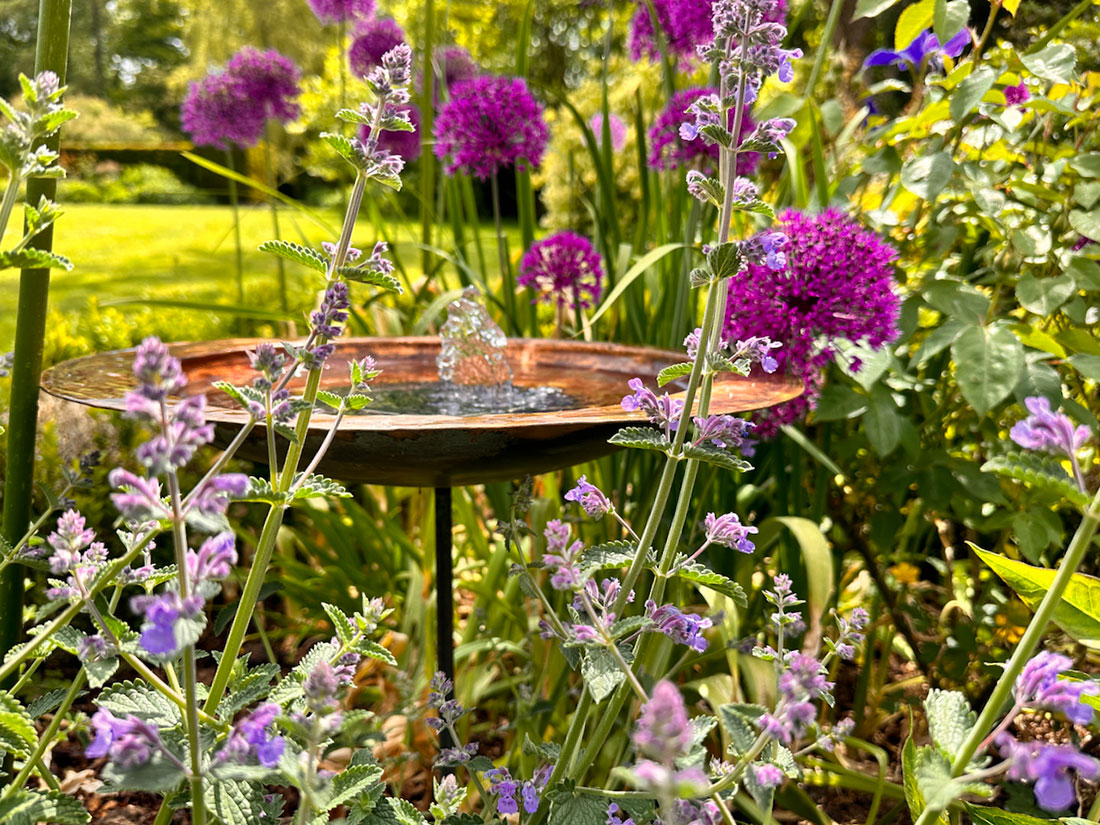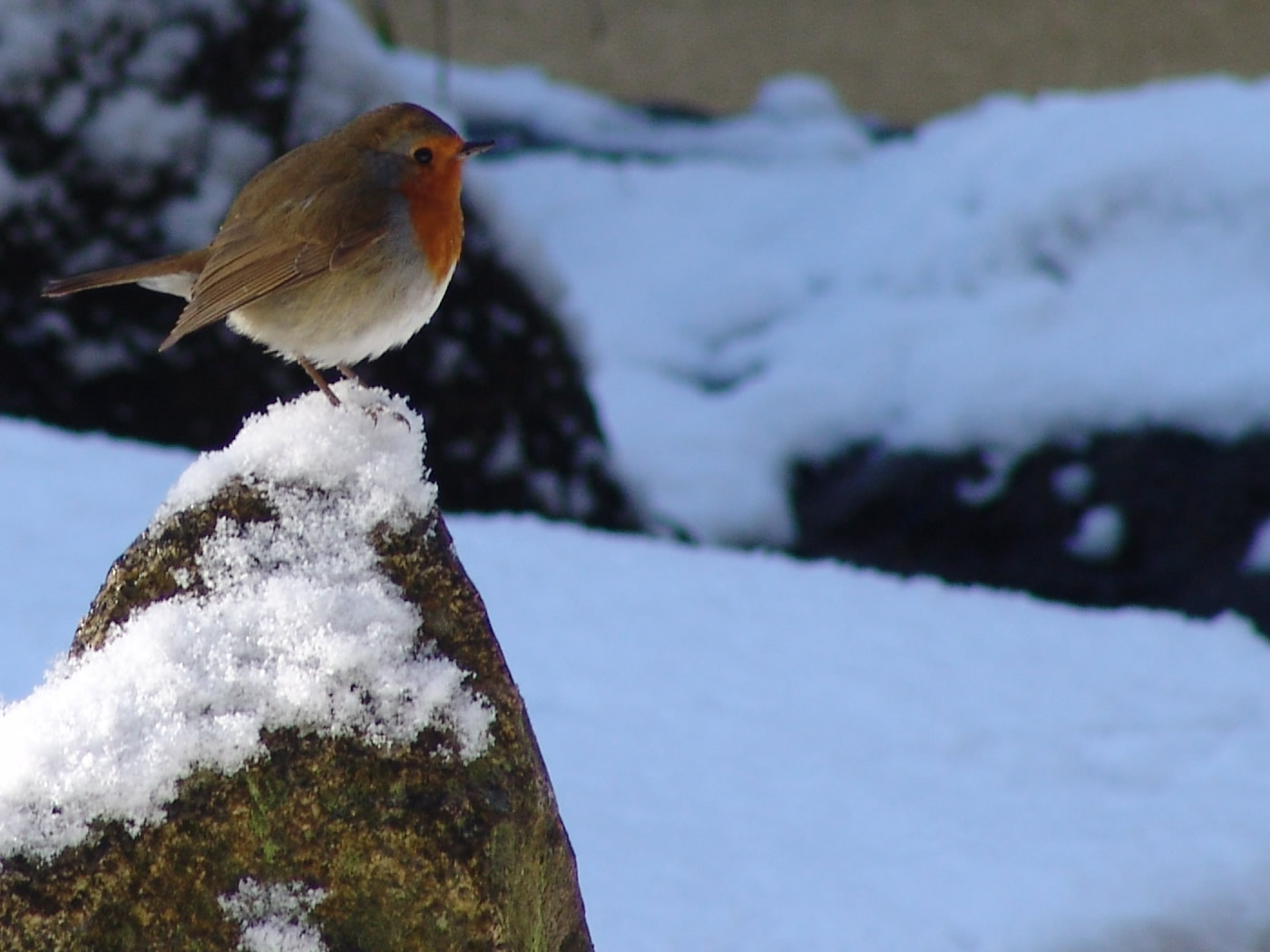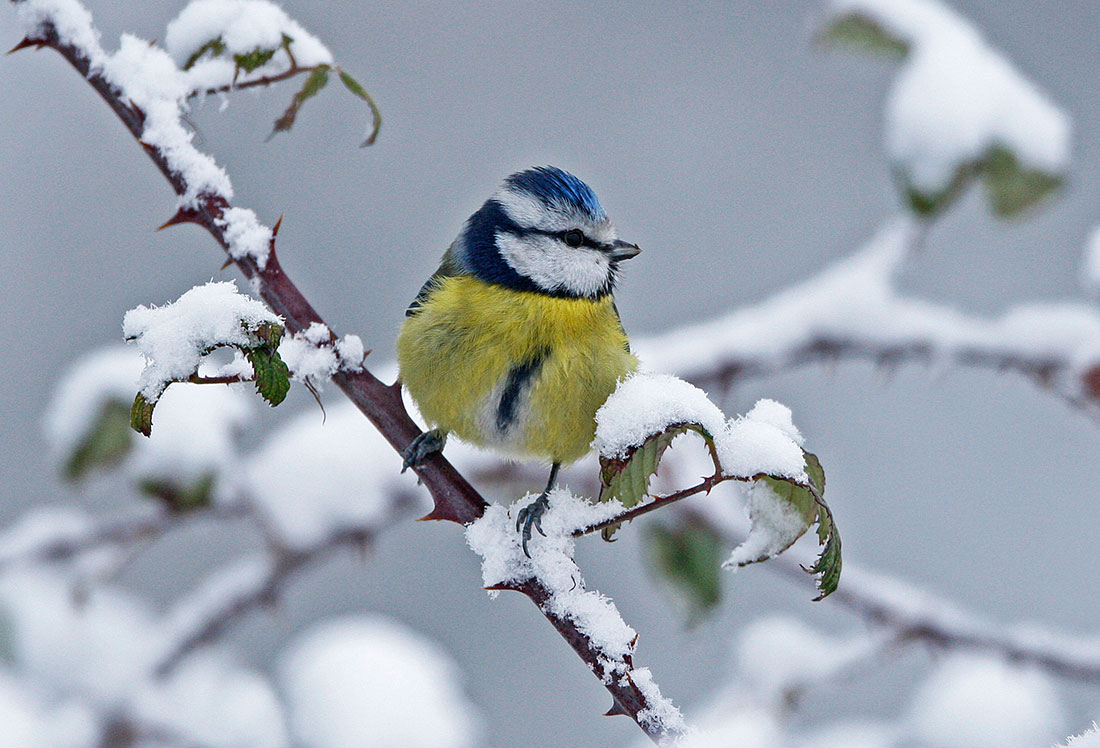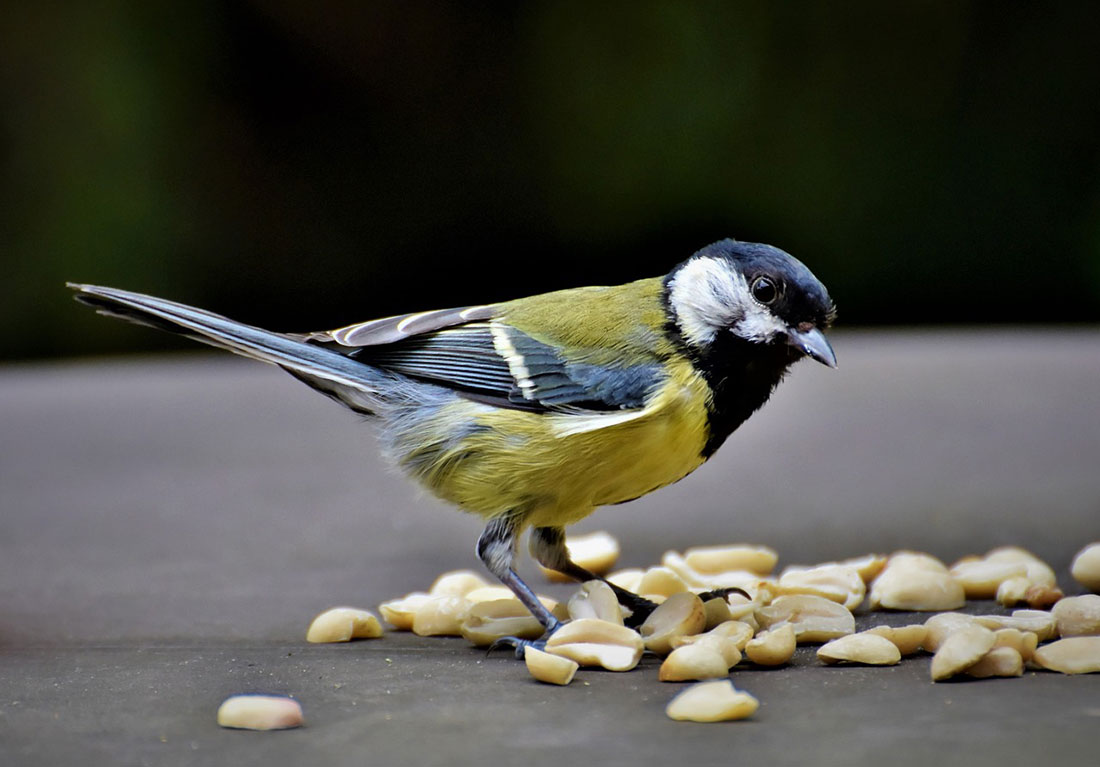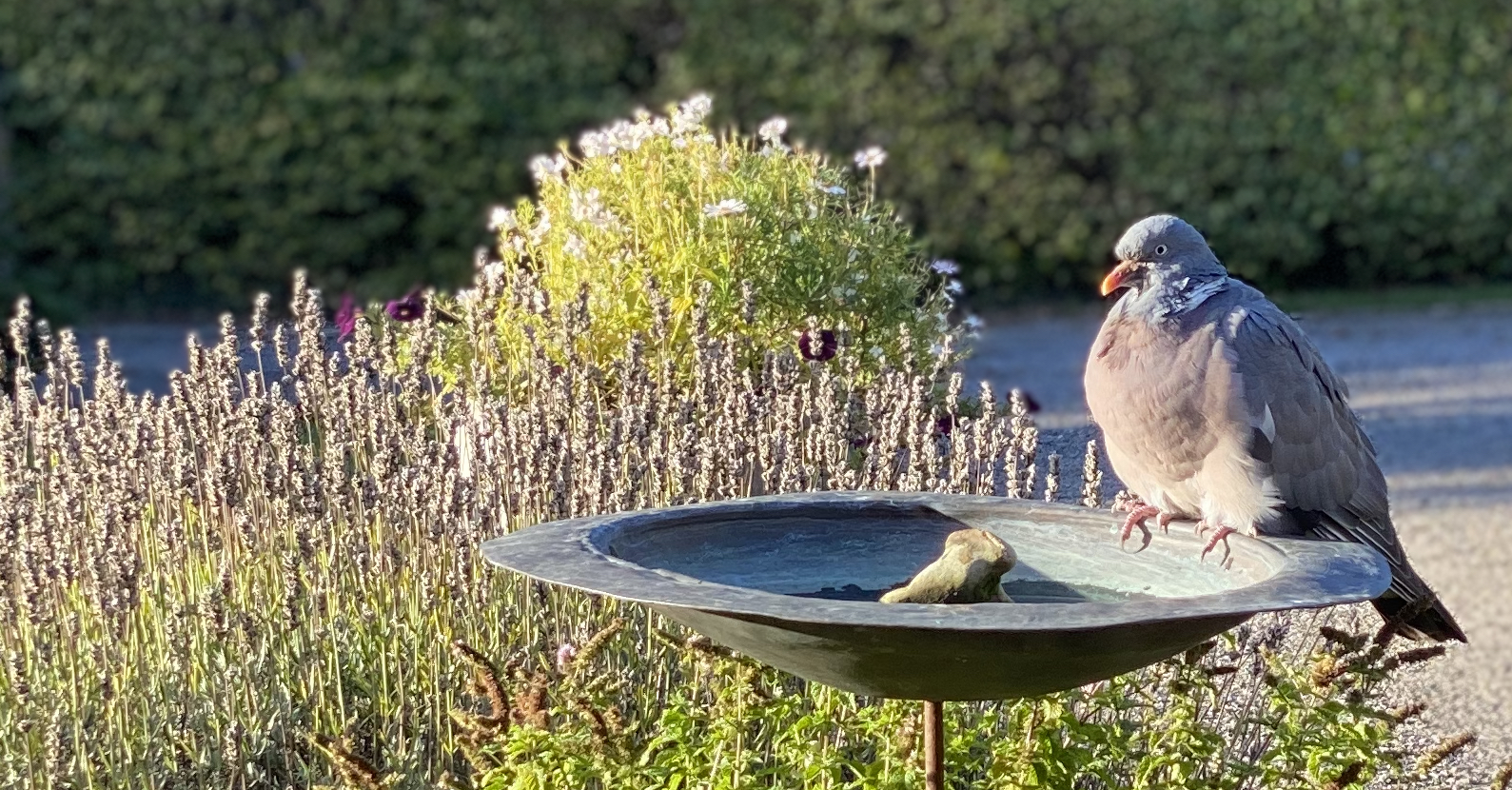
How To Provide Water For Birds
We all know that water is a vital ingredient for life, and this includes for our wild garden birds too. They don’t need bottled water from France or Fiji or filtered water or even fresh rainwater – tap water or water from a hosepipe will do just fine. But they need water!
The big question is how long can birds survive without water?
When I was researching this topic I was shocked to read on flockingaround.com that in extremely hot weather (113˙F/45˙C) some smaller birds like finches can only manage 2-3 hours without water before major dehydration occurs and survival becomes questionable.
I know these extreme temperatures are unlikely to happen in the UK but with our summer temperatures increasingly hitting 100˙C / 37.8˙C small birds won’t be able to survive 6 hours without water. Larger birds can last longer. How much water a bird needs depends on its size – everything is related to mass, and birds are 60%-70% water so keeping this up is imperative.
Birds have no sweat glands so whilst they need less water than mammals, they do lose water through respiration and their droppings. According to the RSPB most small birds need to drink twice a day. They need water to regulate their body processes, maintain a good metabolism and stay healthy.
Now we know this, we need to think “where do birds get their water from?”
Most birds need freshwater to survive although some seabirds such as the albatross have a special gland which enables them to drink seawater! There are even some desert birds that can survive with no water source because their bodies have evolved enough to process the tiny amount of water available in dry seeds. In the UK wild garden birds who eat insects and bugs and worms can get most of the water they need for hydration from the food they eat but those birds who eat seeds need extra water to survive. Berry, fruit, and plant eaters fall somewhere in between but ultimately, they all need to supplement their water levels to some extent.
How do birds find water?
Birds are resourceful when it comes to finding water sources. They mainly use their sight and look for the shine and ripple of moving water, but they also use their sense of hearing to find brooks, rivers, streams, ponds, lakes, reservoirs, and puddles. However, sometimes these natural sources of water are too extreme, or they dry up in the summer months or have predators on the prowl nearby. Or in some instances, the birds themselves just live just too far away so being able to use a garden bird bath with fresh, clean water in a calm, safe place is just what’s needed.
As you can imagine we have a few bird baths in our garden and in one I have put a wonderful solar fountain which generates the sound of moving water as well as the ripple effect and in turn attracts lots of birds. Ours came from Amazon and is made by AISITIN.
Why birds need to bathe?
Water is not just for drinking – birds LOVE and need to bathe in it too! Wetting the feathers removes any unwanted parasites and makes it easier for wild birds to clean away the dirt which in turn helps keep their plumage in good condition. Feathers must be in especially good condition over the winter to help them keep warm. After birds have taken a bath, they preen. Preening is the name given to the cleaning and rearrangement of feathers. Whilst birds are preening, they are also dipping their beaks into their preen gland which supplies oil which they then spread throughout their plumage. This keeps them waterproof as well as provides an insulating layer to keep them warm. This must be done all year round so bathing is as important in the winter months as it is in the summer.
How to provide water for birds?
Birds need water for drinking and bathing at all times of the year, not just in the summer, and we as humans can help by providing this. Bird baths come in all sorts of shapes and sizes. They can be made of stone, ceramic, plastic, metal, and they can be low lying, tall standing, simple or ornate. You don’t even need to buy a specific bird bath you can use a saucer or dish or even an upturned dustbin lid.
But whatever you choose to use you should make sure the water must be clean. Dirty stale water can harbour diseases that can prove fatal for birds. So, if you have decided to have a bird bath in your garden and it is being used regularly, then rinse it out whenever the water looks discoloured and refill it with fresh water. This might need to be done as often as once a day in the summer months.
Depending on what your bird bath is made from you might want to use a stiff-bristled brush to scrub away any stubborn algae or dirt. We design and make bird baths using disused copper boiler bases and so I use copper wire wool to clean mine. I then give them a good rinse and I also spray them with an avian-safe disinfectant which I wipe off before refilling.
It is a good idea to do this deep clean regularly and certainly before the winter sets in. Some bird baths are unsuitable for seriously cold winters as frost can damage concrete or ceramics. However, metal ones like ours will be okay and plastic ones too. Place your bird bath in a sunny place during the winter and maybe even place a ball of some sort in the water to minimise freezing. If the water does freeze then the simplest way to help it thaw is to pour hot water into the bird bath each morning. DO NOT USE ANTI-FREEZE or salt or any chemicals. These are toxic to birds and can be fatal.
Bird baths not only provide a vital watering hole for our wild birds they can also add sculptural elegance to your garden.
- You can place the NICCI bird bath in a stand-alone space and not only will she look sculptural and stylish you know she’s useful too.
- The FLORA and TORI bird baths can be placed in any soft grassy place maybe under a tree or in a flower bed and add an element of style
- The GELDA bird bath can happily stand on her own but if you want to create a truly glorious effect you can place 3 together either in a clump at different heights or space them out through your flower beds.
- The SOPHIE and WILLOW bird baths can be hung from your trees!
Further reading: Where is the best place to put a bird bath?
Contact me if you want to know more or have any questions.
Flora x

